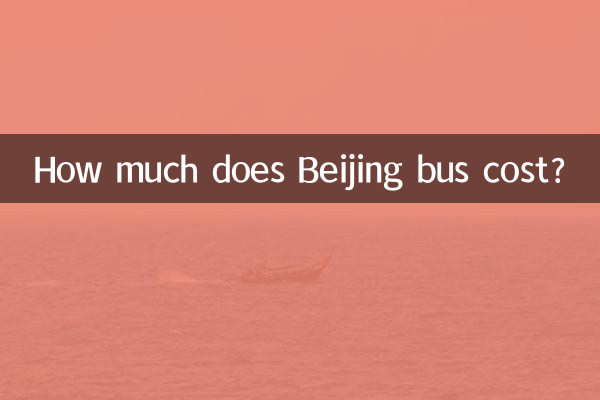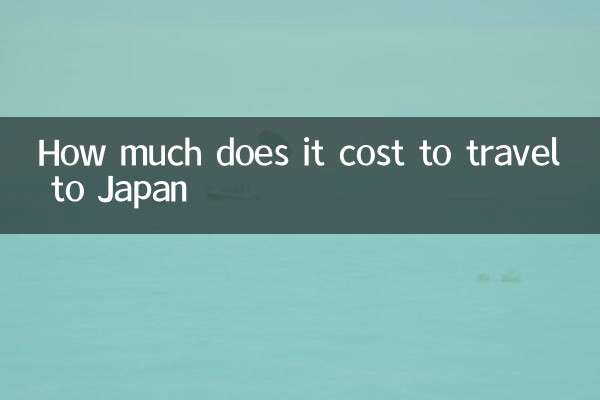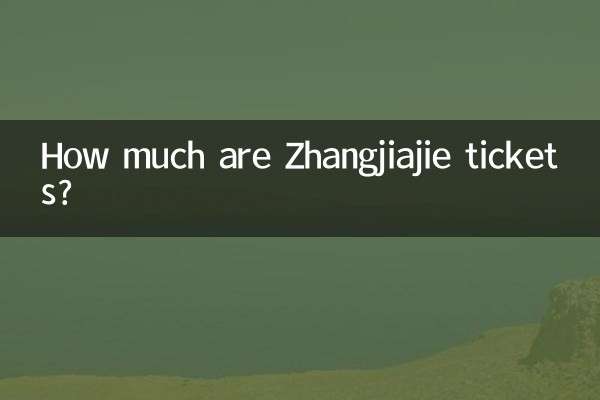How much does the Beijing bus cost? ——Analysis of hot topics and travel costs on the Internet in the past 10 days
Recently, Beijing bus fares and related travel costs have become a hot topic on social media. This article will combine the hot content of the entire network in the past 10 days to give you a structured presentation of Beijing’s bus fare system and analyze the focus issues of public concern.
1. Beijing public transportation basic fare system (2023 updated version)

| Car model classification | Pricing method | base fare | Preferential policies |
|---|---|---|---|
| regular bus | Segment pricing | 2 yuan within 10 kilometers, plus 1 yuan for every additional 5 kilometers | 50% off municipal transportation card |
| Bus Rapid Transit (BRT) | single ticket system | 2 yuan | Same as regular bus |
| night bus | single ticket system | 3 yuan | No discount |
| Customized bus | by mileage | Ranging from 5-20 yuan | Monthly card discount |
2. Top 5 hot topics on the Internet
| Ranking | discussion topics | heat index | Main points of dispute |
|---|---|---|---|
| 1 | Discounts for bus and subway connections | 92,000 | Is the transfer time limit reasonable? |
| 2 | Controversy over the use of senior citizen cards | 78,000 | Should cancellations be free during peak hours? |
| 3 | New energy bus cost | 65,000 | Will the fare increase as the vehicle is upgraded? |
| 4 | Mobile payment convenience | 53,000 | Alipay/WeChat insufficient coverage problem |
| 5 | Insufficient suburban lines | 41,000 | Travel costs are high for residents in outer suburbs |
3. Comparative analysis of actual travel costs
Take a typical commuting route as an example (Tiantongyuan to Guomao, about 20 kilometers):
| Transportation | One way fare | Monthly fee (22 days) | time cost |
|---|---|---|---|
| regular bus | 4 yuan (2 yuan after discount) | 88 yuan | 90-120 minutes |
| subway | 6 yuan | 264 yuan | 50 minutes |
| Bus + subway combination | 5 yuan (3 yuan after discount) | 132 yuan | 70 minutes |
| Online car hailing | 45-60 yuan | 1980-2640 yuan | 40 minutes |
4. Policy dynamics and future trends
1.Beijing-Tianjin-Hebei all-in-one card interoperability: It is expected that the bus systems of the three places will be seamlessly connected in 2024. During the current testing period, passengers traveling across provinces and cities can enjoy a 20% discount.
2.Carbon Credit Pilot: Taking public transportation can accumulate personal carbon account points, which may be exchanged for coupons and other rights in the future. This topic has been read on Weibo by 230 million people.
3.Dynamic fare research: Big data shows that the bus occupancy rate in the morning and evening peaks reaches 120%. Experts suggested piloting a floating fare mechanism, which triggered heated discussions.
5. Practical suggestions for citizens
1.Combination payment optimal solution: Using the "Beijing Card" APP, you can enjoy bus discounts and transfer discounts at the same time, saving 20%-30% compared to mobile payment alone.
2.Travel during peak hours: During non-peak hours (9:30-16:30), some lines provide "empty bus reservation" service, and seats can be locked in advance through the "Beijing Public Transport" WeChat official account.
3.Customized bus: Groups of more than 5 people can apply for customized routes, and the per-person cost is 60% lower than online car-hailing. Recently, 30 community microcirculation routes have been added.
The current discussion on Beijing’s bus fares has extended from simple price comparison to the construction of the city’s smart transportation system. Data shows that 82% of the respondents believe that the fare system is basically reasonable, but hope to improve service quality and travel efficiency. With the advancement of new energy vehicle updates and digital transformation, Beijing's public transportation system is facing new development opportunities and challenges.

check the details

check the details